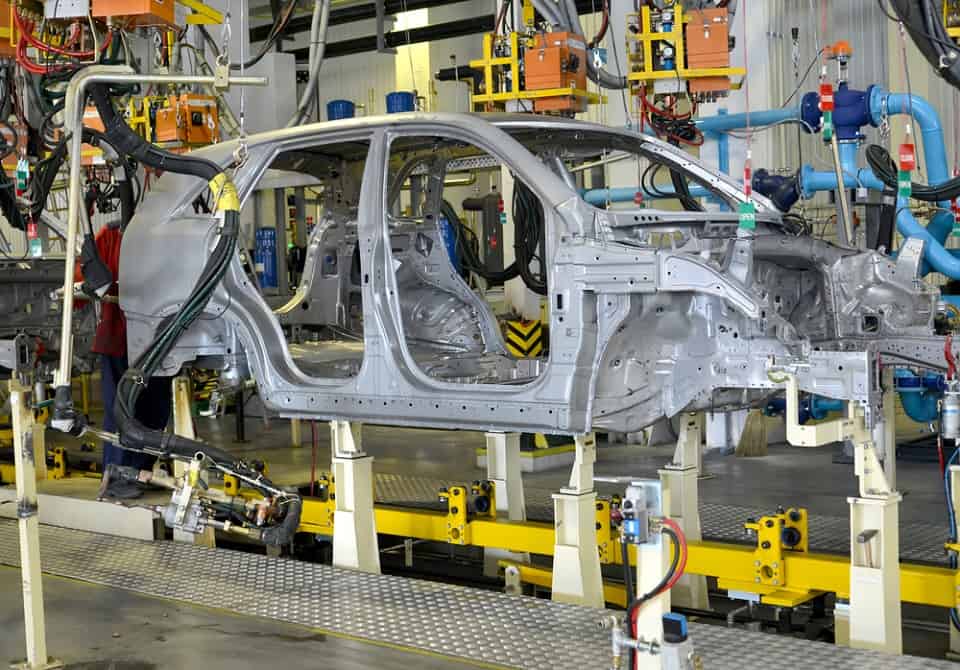Cognitive Process Automation Cognitive automation describes diverse by Ajay jejurkar

As new data is added to the system, it forms connections on its own to continually learn and constantly adjust to new information. RPA helps businesses support innovation without having to pay heavily to test new ideas. It frees up time for employees to do more cognitive and complex tasks and can be implemented promptly as opposed to traditional automation systems.

To stay ahead of the curve in 2024, businesses need to be aware of the cutting-edge platforms that are pushing the boundaries of intelligent process automation. Whether you’re looking to optimize customer service, streamline back-office operations, or unlock insights buried in your data, the right cognitive automation tool can be a game-changer. Manufacturers use cognitive computing technologies to maintain and repair their machinery and equipment, as well as reduce production times and parts management.
One of the key benefits of cognitive automation is its ability to streamline repetitive tasks. By leveraging machine learning and natural language processing, cognitive automation can take over routine and mundane tasks, freeing up valuable time for employees to focus on more strategic and creative work. For example, a small business owner can use cognitive automation to automate data entry tasks, such as inputting customer information into a database. When introducing automation into your business processes, consider what your goals are, from improving customer satisfaction to reducing manual labor for your staff. Consider how you want to use this intelligent technology and how it will help you achieve your desired business outcomes.
Before we dive into this engrossing topic it is necessary to get an understanding of the two words which come together to give us this word. Although these skills are present in other organisms in nature we humans have it in an advanced stage of development, this trait is the basis of human advancement and thought process. In general, the term cognitive computing has been used to refer to new hardware and/or software that mimics the functioning of the human brain[5][6][7][8][9] (2004). In this sense, cognitive computing is a new type of computing with the goal of more accurate models of how the human brain/mind senses, reasons, and responds to stimulus. Cognitive computing applications link data analysis and adaptive page displays (AUI) to adjust content for a particular type of audience. As such, cognitive computing hardware and applications strive to be more affective and more influential by design.
RPA tools interact with existing legacy systems at the presentation layer, with each bot assigned a login ID and password enabling it to work alongside human operations employees. Business analysts can work with business operations specialists to “train” and to configure the software. Because of its non-invasive nature, the software can be deployed without programming or disruption of the core technology platform. The emerging trend we are highlighting here is the growing use of cognitive technologies in conjunction with RPA. And it’s ideal for automating workflows that involve legacy systems that lack APIs, virtual desktop infrastructures (VDIs), or database access. The coolest thing is that as new data is added to a cognitive system, the system can make more and more connections.
Key Benefits – RPA
In Tax, RPA refers to software used to create automations, or robots (bots), which are configured to execute repetitive processes, such as submitting filings to tax authority web portals. With robots making more cognitive decisions, your automations are able to take the right actions at the right times. And they’re able to do so more independently, without the need to consult human attendants. The most successful organizations are laser-focused on what they are trying to achieve with R&CA, and they have success measures that are explicit and transparent. This clarity makes it easier to align people, resources, and initiatives across the enterprise to achieve the expected benefits. According to the 2017 Deloitte state of cognitive survey, 76 percent of companies across a wide range of industries believe cognitive technologies will “substantially transform” their companies within three years.
Craig Muraskin, Director, Deloitte LLP, is the managing director of the Deloitte U.S. Innovation group. Intelligent automation simplifies processes, frees up resources and improves operational efficiencies, and it has a variety of applications. An insurance provider can use intelligent automation to calculate payments, make predictions used to calculate rates, and address compliance needs. Cognitive automation has the power to transform business operations by streamlining repetitive tasks that are traditionally time-consuming and prone to human error.
With proactive governance, continued progress in AI could benefit humanity rather than harm it. Learn how they can boost customer satisfaction, improve service efficiency, and drive revenue. Aside from serving as a worthwhile resource for internal use, intelligent automation can also be a valuable tool for customer self-service. Much like gathering data and insights, IA can help businesses drive more sales by providing strategy recommendations and optimizing existing sales processes. Administrators can set up event-based (triggers) or time-based (automations) business rules so the AI will automatically address a task when the need arises without human intervention.

Cognitive automation has the potential to completely reorient the work environment by elevating efficiency and empowering organizations and their people to make data-driven decisions quickly and accurately. These trends and innovations will continue to reshape industries, enabling organizations to achieve higher levels of efficiency, productivity, and innovation. Embracing these developments will empower businesses to thrive in an increasingly automated world. Cognitive automation, a subset of AI, focuses on mimicking human thought processes and decision-making abilities.
You can access your lectures, readings and assignments anytime and anywhere via the web or your mobile device. When you combine RPA’s quantifiable value with its ease of implementation relative to other enterprise technology, it’s easy to see why RPA adoption has been accelerating worldwide. In summary, the future of RPA is bright, with innovations like hyperautomation, cognitive automation, and ethical considerations leading the way.
Traditionally, documents were manually sorted and categorized, which was time-consuming and prone to errors. With intelligent document classification, machine learning algorithms are trained to automatically classify documents based on their content, eliminating the need for manual intervention. This automation not only saves time but also ensures consistency and accuracy in document classification. The world of technology is constantly evolving, and with each passing day, new innovations emerge that shape the way we work and live. In the realm of automation, Robotic Process Automation (RPA) has been gaining significant attention for its ability to streamline repetitive and manual tasks, freeing up valuable time and resources for businesses. As RPA continues to mature, it is important to explore the future trends and innovations that will further enhance its capabilities and impact various industries.
IBM Consulting’s extreme automation consulting services enable enterprises to move beyond simple task automations to handling high-profile, customer-facing and revenue-producing processes with built-in adoption and scale. https://chat.openai.com/ Businesses are increasingly adopting cognitive automation as the next level in process automation. RPA is a cornerstone of intelligent automation, where software bots perform repetitive tasks within business processes.
These assistants can handle repetitive and mundane tasks, allowing employees to focus on more strategic and value-added activities. FasterCapital will become the technical cofounder to help you build your MVP/prototype and provide full tech development services. The total number of relays and cam timers can number into the hundreds or even thousands in some factories.
With cognitive automation, retail businesses can deploy sophisticated chatbots and virtual assistants that handle customer inquiries and provide assistance 24/7. These AI-driven tools understand and process natural language, allowing them to interact with customers in a more human-like manner. This leads to quicker resolution of issues and queries, enhancing customer satisfaction. Processes that draw from structured data sources work with regular RPA process automation. Yet roughly 80% of data is unstructured — meaning information is difficult to access, digitize and extract using traditional RPA solutions. Using native AI technologies enable cognitive automation solutions that can process unstructured data.
Control
Pre-trained to automate specific business processes, cognitive automation needs access to less data before making an impact. By performing complex analytics on the data, it can complete tasks such as finding the root cause of an issue and autonomously resolving it or even learning ways to fix it. While more complex than RPA, it can still be rolled out in just a few weeks and as additional data is added to the system, it is able to form connections and learn and adjust to the new landscape. By transforming work systems through cognitive automation, organizations are provided with vast strategic opportunities to gain business value. However, research lacks a unified conceptual lens on cognitive automation, which hinders scientific progress.
What Is Artificial Intelligence (AI)? – Investopedia
What Is Artificial Intelligence (AI)?.
Posted: Tue, 09 Apr 2024 07:00:00 GMT [source]
Typical enterprise still relies on multiple resources to process data and increase business agility, accuracy and efficiency. Our survey of 250 executives who are familiar with their companies’ use of cognitive technology shows that three-quarters of them believe that AI will substantially transform their companies within three years. However, our study of 152 projects in almost as many companies also reveals that highly ambitious moon shots are less likely to be successful than “low-hanging fruit” projects that enhance business processes. This shouldn’t be surprising—such has been the case with the great majority of new technologies that companies have adopted in the past. But the hype surrounding artificial intelligence has been especially powerful, and some organizations have been seduced by it. In cognitive automation, certain degrees of cognition are taken over and approximated by machines that provide two types of outputs – decisions and/or solutions .
Early programming techniques and languages were needed to make such systems manageable, one of the first being ladder logic, where diagrams of the interconnected relays resembled the rungs of a ladder. Special computers called programmable logic controllers were later designed to replace these collections of hardware with a single, more easily re-programmed unit. Before the PLC, control, sequencing, and safety interlock logic for manufacturing automobiles was mainly composed of relays, cam timers, drum sequencers, and dedicated closed-loop controllers.
Convertibility and turnaround time
While it requires less upfront training, it can also hit hurdles if the boundaries that it operates within change. RPA involves robots that operate on rules and schedules, meaning businesses may need to reconfigure them if internal processes change. Most businesses are only scratching the surface of cognitive automation and are yet to uncover their full potential.
Industrial automation is to replace the human action and manual command-response activities with the use of mechanized equipment and logical programming commands. One trend is increased use of machine vision[115] to provide automatic inspection and robot guidance functions, another is a continuing increase in the use of robots. Logistics automation is the application of computer software or automated machinery to improve the efficiency of logistics operations. Typically this refers to operations within a warehouse or distribution center, with broader tasks undertaken by supply chain engineering systems and enterprise resource planning systems. Organizations can optimize inventory levels, reduce stockouts, and improve supply chain efficiency by automating demand forecasting.
You must start somewhere though and most organisations tend to do so at the more basic end. RPA allows businesses to manage volume quickly and cost-effectively before stepping up to cognitive automation once they are ready to handle volume and complexity. It’s all about getting the right mix for your needs and partnering with a quality vendor for guidance on your automation journey is highly recommended. At the end of the day, embracing RPA and cognitive automation is all about putting oneself in the best position to empower employees and improve customer experience. The most obvious shortfall of RPA compared to cognitive automation is it cannot learn from the data it collects.
In this section, we will explore the various stages of automation in IDR and how it has revolutionized the way businesses handle document management. In summary, the evolution of workflow automation is a dynamic journey, shaped by technological advancements, ethical considerations, and collaborative efforts. As organizations embrace these trends, they pave the way for a more efficient and intelligent future.
Identifying and disclosing any network difficulties has helped TalkTalk enhance its network. As a result, they have greatly decreased the frequency of major incidents and increased uptime. Intending to enhance Bookmyshow‘s client interactions, Splunk has provided them with a cognitive automation solution. RPA use cases in healthcare are numerous, providing not only cost-effective solutions for manual processes but also helps overall employee satisfaction. Having more time to focus on complex tasks rather than worrying about data collection, data entry, and other repetitive tasks allows the staff to focus more on providing better patient care — thus increasing its overall quality.
This enables predictive insights and more sophisticated test scenarios, ensuring the software is robust and prepared for real-world retail challenges. Cognitive automation tools can analyze a customer’s browsing behavior and use this data to highlight products that align with their interests and needs. This targeted approach makes product discovery more intuitive and efficient, leading to a more satisfying shopping experience. Cognitive automation systems can provide customers with real-time updates on product availability.
- Embracing these future trends in RPA will undoubtedly boost a startup’s efficiency and competitiveness in the market.
- Leverage public records, handwritten customer input and scanned documents to perform required KYC checks.
- For example, chatbots can provide conversational support for most minor issues and many customers like using them because of the added layer of convenience.
- In the future, we can expect to see a significant expansion of cognitive automation in RPA.
Many of them have achieved significant optimization of this challenge by adopting cognitive automation tools. Personalisation of user engagements is also a well-known application Chat GPT for many technologies in the cognitive domain. Personalised ads and direct marketing are often underpinned by technologies such as analytics and machine learning.
Cognitive automation represents a range of strategies that enhance automation’s ability to gather data, make decisions, and scale automation. It also suggests how AI and automation capabilities may be packaged for best practices documentation, reuse, or inclusion in an app store for AI services. It infuses a cognitive ability and can accommodate the automation of business processes utilizing large volumes of text and images. Cognitive automation, therefore, marks a radical step forward compared to traditional RPA technologies that simply copy and repeat the activity originally performed by a person step-by-step.
It begins with syntactic parsing for grammatical analysis and semantic analysis for extracting meaning and context. Sentiment analysis allows machines to discern emotional tones in text, crucial for gauging user sentiments. NLP also excels in extracting meaningful insights from intricate documents, making it a versatile tool for businesses dealing with vast sets of structured and unstructured data. But before describing that trend, let’s take a closer look at these software robots, or bots.
Cognitive technologies have evolved out of the ever expanding artificial intelligence space. As AI become more common place within businesses, applications for the cognitive learning aspects become more apparent. Some of these system are consumer facing, such as Siri or Cortana, however many are not. Most cognitive technologies are shaped around streamlining operations within a business, creating value from information that was previously locked behind sheer volume or complexity.
Understanding the basics of automation is critical for any business that wants to stay competitive in today’s fast-paced world. With the right strategy and execution, automation can bring several benefits to businesses, including increased efficiency and reduced costs. However, it is important to carefully consider the risks and plan accordingly to ensure a successful automation strategy. RPA and AI in healthcare could prevent data breaches and leaks of sensitive information.
The collaborative robot pushed the limits of what humans and machines can accomplish together, thanks largely to cognitive computing — the use of computerized models to emulate the human brain. Therefore, it is crucial for policymakers and industry leaders to take a proactive approach to the deployment of large language models and other AI systems, ensuring that their implementation is balanced and equitable. However, as with any technological advancement, the impact of large language models and other AI systems on labor markets will depend on how they are implemented and integrated into the economy.
It provides predictive insights into potential supply chain disruptions and optimizes logistics operations, including delivery route planning. These capabilities ensure a smoother, more efficient supply chain, which translates into quicker, more reliable delivery services for customers, enhancing their overall shopping experience. The importance of cognitive automation in retail cannot be ignored, especially while considering its market growth and adoption rate. The global market for cognitive process automation is expected to grow at a staggering compound annual growth rate (CAGR) of 27.8% from 2023 to 2030. Such growth indicates the increasing reliance on these technologies to improve retail efficiency, accuracy, and customer experience.

AI is also making it possible to scientifically discover a complete range of automation opportunities and build a robust automation pipeline through RPA applications like process mining. Deloitte provides Robotic and Cognitive Automation (RCA) services to help our clients address their strategic and critical operational challenges. Our approach places business outcomes and successful workforce integration of these RCA technologies at the heart of what we do, driven heavily by our deep industry and functional knowledge.
Automated processes can only function effectively as long as the decisions follow an “if/then” logic without needing any human judgment in between. Cognitive insight technologies are capable of altering their algorithms and resultant outputs over multiple iterations (sometimes millions) without human input. Through these iterations the machine will alter its code, optimising the testing process for its next iteration. As this continues, the machine will retain successful processes, while culling failed processes.
Part of any IA implementation is to redefine your organizational structure and prepare your culture. As automation increases, some manual tasks and client communication will be handled, and employee time will cognitive automation meaning open up to focus on higher-value tasks and business relationships. Depending on where the consumer is in the purchase process, the solution periodically gives the salespeople the necessary information.
Robotic Process Automation (RPA) tools can help businesses improve the efficiency and effectiveness of their operations faster and at a lower cost than other automation approaches. Interest and activity in RPA is growing and we are increasingly seeing deployments reaching enterprise scale and operating on processes across the organization. To build and manage an enterprise-wide RPA program, you need technology that can go far beyond simply helping you automate a single process. You require a platform that can help you create and manage a new enterprise-wide capability and help you become a fully automated enterprise™.
This shift of models will improve the adoption of new types of automation across rapidly evolving business functions. CIOs will derive the most transformation value by maintaining appropriate governance control with a faster pace of automation. “The shift from basic RPA to cognitive automation unlocks significant value for any organization and has notable implications across a number of areas for the CIO,” said James Matcher, partner in the technology consulting practice at EY. The convergence of cognitive computing and AI is propelling us into a future where machines are not just tools but intelligent partners.
With AI in the mix, organizations can work not only faster, but smarter toward achieving better efficiency, cost savings, and customer satisfaction goals. Intelligent automation simplifies processes, frees up resources and improves operational efficiencies through various applications. An insurance provider can use intelligent automation to calculate payments, estimate rates and address compliance needs.
Their responses in the transcript below have been copied exactly as written and have not been edited for accuracy. Business process management (BPM) is the operations specialist of the intelligent automation group. For instance, let’s say you want to create an IA function to optimize change management—or how your business will use tools to manage and adapt to change.
The gains from AI should be broadly and evenly distributed, and no group should be left behind. Universal basic income programs and increased investment in education and skills training may be needed to adapt to a more automated world and maximize the benefits of advanced AI for all. The rapid progress in AI capabilities is partly due to the availability of massive datasets to train increasingly powerful machine learning models. However, developing safe and robust AI systems will require more than just data and compute. First, language models have been trained on vast amounts of data that represent, in a sense, a snapshot of our human culture.
But software robots can do it faster and more consistently than people, without the need to get up and stretch or take a coffee break. The COVID-19 pandemic has only expedited digital transformation efforts, fueling more investment within infrastructure to support automation. By automating cognitive tasks, organizations can reduce labor costs and optimize resource allocation. Automated systems can handle tasks more efficiently, requiring fewer human resources and allowing employees to focus on higher-value activities. To reap the highest rewards and return on investment (ROI) for your automation project, it’s important to know which tasks or processes to automate first so you know your efforts and financial investments are going to the right place. Cognitive RPA has the potential to go beyond basic automation to deliver business outcomes such as greater customer satisfaction, lower churn, and increased revenues.
Advancements in Robotics Process Automation (RPA) have paved the way for Intelligent Process Automation (IPA), combining the power of RPA with artificial intelligence (AI) and machine learning (ML) capabilities. This integration opens up a world of new opportunities for businesses looking to streamline their operations and drive growth. For instance, a manufacturing company can use cognitive automation to analyze data from its production line and identify potential bottlenecks or quality issues. By identifying these issues early on, the company can take proactive measures to address them, thereby improving overall operational efficiency and reducing costs.
Cognitive automation is a subset of AI, using specific AI techniques to mimic the way the human brain works, and assisting in decision making, task completion or meeting goals. AI technologies used to automate business processes include third-party AI integrations and native AI technologies such as computer vision, natural language processing, machine learning and fuzzy logic. Thus, cognitive automation will impact how organizations conduct business, and how value creation mechanisms function, which ultimately affects the future of work. As the number of tasks and processes that are candidates for cognitive automation is steadily increasing, the workforce of the future will be required to re-skill workers towards more unique human work (Card & Nelson, 2019).
- On the other hand, Cognitive Process Automation (CPA) is a bit different but is very much compatible with RPA.
- Administrators can set up event-based (triggers) or time-based (automations) business rules so the AI will automatically address a task when the need arises without human intervention.
- This not only consumes valuable time but also increases the risk of errors creeping into the data.
- Like our brains’ neural networks creating pathways as we take in new information, cognitive automation makes connections in patterns and uses that information to make decisions.
- Identifying and disclosing any network difficulties has helped TalkTalk enhance its network.
- As business process automation takes over the repetitive, routine manual work, human error is eliminated, and costly mistakes no longer happen in business operations.
Cognitive automation can use AI techniques in places where document processing, vision, natural language and sound are required, taking automation to the next level. You can foun additiona information about ai customer service and artificial intelligence and NLP. A holistic view of automation capabilities can help organize and galvanize a team to avoid the common robotics and cognitive automation pitfalls and ultimately achieve scale. Start by articulating the robotics and cognitive automation mission based on key value drivers and establish a clear and compelling business case.
The promise of shorter call durations and an improved experience for customers and agents alike. Having emerged about 20 years ago, RPA is a cost-effective solution for businesses wanting to pursue innovation without having to pay heavily to test new ideas. It can also be implemented more quickly than traditional automation systems, freeing up time for employees to tackle an increased number of cognitive and complex tasks. Its ability to address tedious jobs for long durations helps increase staff productivity, reduce costs and lessen employer attrition. This is less of an issue when cognitive automation services are only used for straightforward tasks like using OCR and machine vision to automatically interpret an invoice’s text and structure. When combined with Artificial Intelligence (AI), Virtual Reality (VR) and the recently emergent Augmented Reality (AR) technologies offer the potential to delivery next generation customer experiences.
Instead of manually responding to each email or phone call, cognitive automation can be used to analyze the customer’s query, understand the context, and provide a relevant and personalized response. This not only improves efficiency but also enhances the customer experience by ensuring quick and accurate responses. Intelligent automation is important because it helps businesses find a higher level of efficiency, even as it enables more connection with customers and other stakeholders.
That means your digital workforce needs to collaborate with your people, comply with industry standards and governance, and improve workflow efficiency. This highly advanced form of RPA gets its name from how it mimics human actions while the humans are executing various tasks within a process. Such processes include learning (acquiring information and contextual rules for using the information), reasoning (using context and rules to reach conclusions) and self-correction (learning from successes and failures).
In conclusion, the future of automation is promising, with emerging technologies and trends revolutionizing various industries. From AI and ML to RPA, IoT, blockchain, and autonomous vehicles, businesses have a wide range of tools at their disposal to streamline operations, reduce costs, and enhance productivity. It is crucial for organizations to stay updated with these emerging technologies and adopt them strategically to gain a competitive edge in the ever-evolving landscape of automation.
Cognitive automation is not simply about introducing a new platform type into your enterprise. The term cognitive computing is typically used to describe AI systems that simulate human thought for augmenting human cognition. Human cognition involves real-time analysis of the real-world environment, context, intent and many other variables that inform a person’s ability to solve problems. Through the media, we are constantly being bombarded with stories of an automated future, where man is replaced with a machine.

Establishing clear governance structures ensures that automation efforts align with organizational objectives and comply with requirements. These systems define, deploy, monitor, and maintain the complexity of decision logic used by operational systems within an organization. Systems used in the cognitive sciences combine data from various sources while weighing context and conflicting evidence to suggest the best possible answers. To achieve this, cognitive systems include self-learning technologies that use data mining, pattern recognition and NLP to mimic human intelligence. Consider consulting an experienced automation software solution company to properly identify, and avoid these problems. We take pride in our ability to correctly overcome all the potential challenges faced by our clients, and our ability to meet their expectations and add value to their business.
An example of cognitive computing is Baxter, a robot that could learn by having humans grab its arms and show it how to do tasks. The latest version of this robot is Sawyer, which also has two arms and can perform repetitive and potentially dangerous tasks in the workplace. Although Baxter’s success was short-lived, it helped usher in a new age of automation in which machines could work safely and harmoniously with humans.
Many organisations have adopted next-best-offer / next-best-conversation programs which use big data and machine learning capabilities to drive consumer behaviour based on their individual circumstances. Uses for cognitive technologies can be broadly separated into three key pillars; engagement, insight and automation. From these key facets cognitive technology can be used to sense and shape processes, replicating and sometimes exceeding complex human thought patterns. At their heart, cognitive technologies aim to emulate human capabilities, providing a bridge between human consciousness and the static logic of computing.
You can foun additiona information about ai customer service and artificial intelligence and NLP. This makes it easier for business users to provision and customize cognitive automation that reflects their expertise and familiarity with the business. In practice, they may have to work with tool experts to ensure the services are resilient, are secure and address any privacy requirements. Where little data is available in digital form, or where processes are dominated by special cases and exceptions, the effort could be greater. Some RPA efforts quickly lead to the realization that automating existing processes is undesirable and that designing better processes is warranted before automating those processes.
Intelligent automation powered robo-advisors build financial portfolios as well as comprehensive solutions like trading, investments, retirement plans, and others for their customers. Businesses, to sustain themselves in today’s competitive digital era, must innovate, scale and grow at a rapid pace. However, more than 60% of organizational data is either semi-structured or unstructured. Building a positive narrative around cognitive automation within the organization starts with the executive team. The C-suite is responsible for articulating what the future looks like and how the organization gets there. Like any innovation, many people start off with a fear of automation, particularly when it comes to the automation of knowledge work.
Another area where cognitive automation can have a significant impact is customer service. Traditional customer service processes often involve customers waiting in long queues to speak with a representative or navigating through complex IVR systems. Once you have your goal, learn or find expertise on the kinds of technology infrastructure that will allow you to design and track these processes and can provide algorithms you can tailor to your specific needs.









